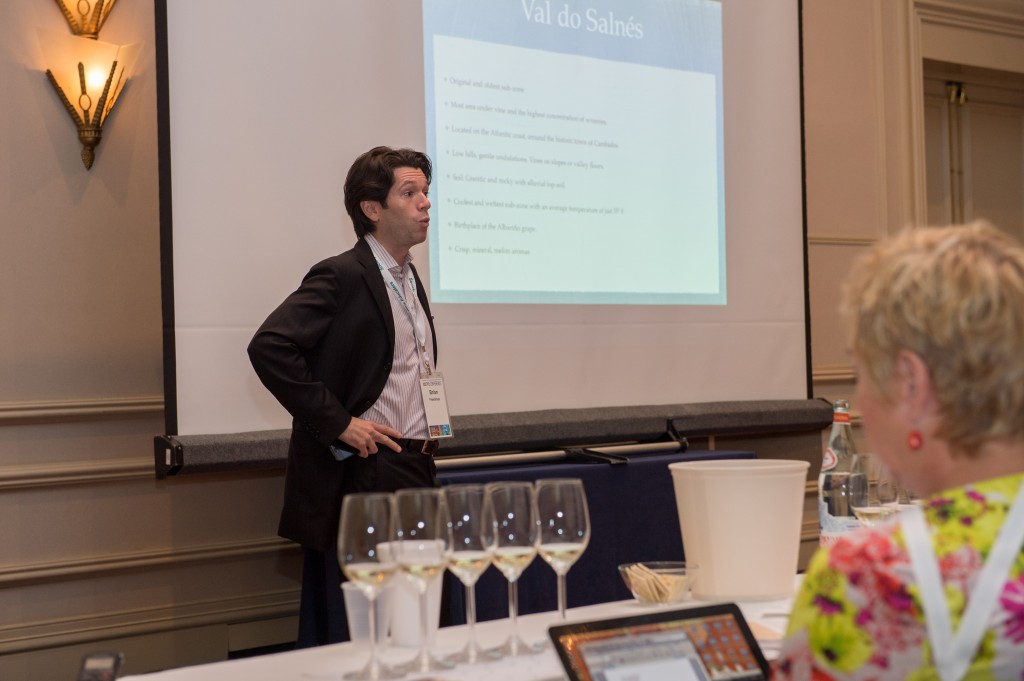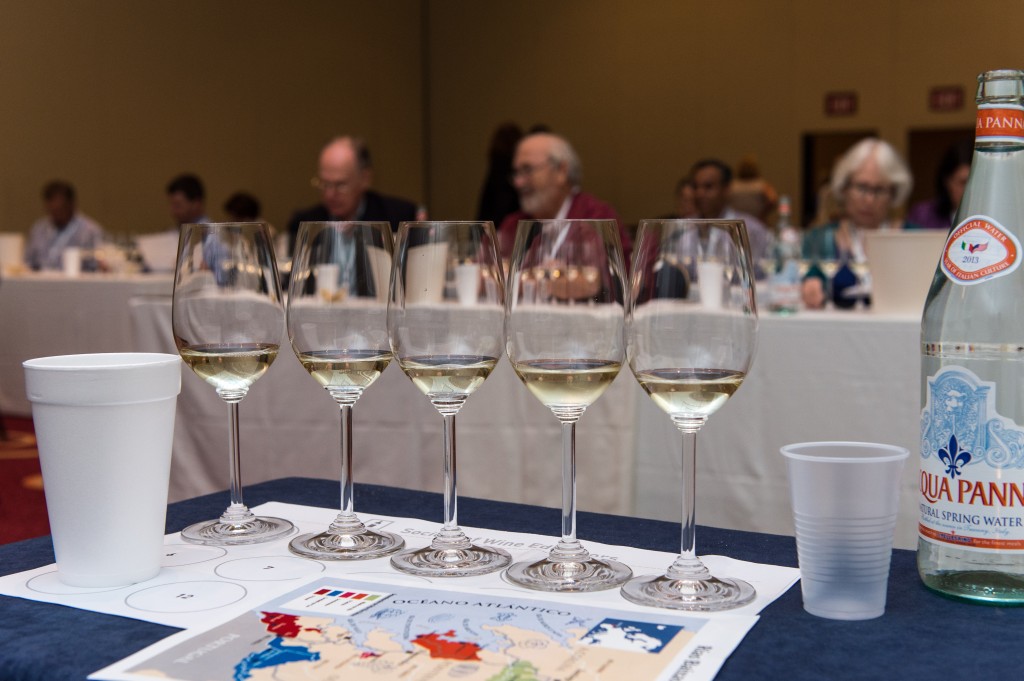SWE Conference Highlights 2013
Starting off the general sessions on Wednesday morning, Brian Freedman treated us to a tasting of delicious Albariño-based wines from Rías Baixas. The full name of the session was “Albariño, Rias Baixas, and the Evolution of a Spanish Icon.”
Rías Baixas is the most important Denomination of Origin (DO) in the Galicia region of northwestern Spain, sometimes known as “Green Spain” due to its cool climate and abundance of rain, especially as compared to the rest of Spain. The DO was formally established in 1988, and has since received much acclaim for the crisp, fruity, and mineral-driven white wines from the Albariño grape variety.
Brian led us through a tasting of wines from each of the sub-regions of Rías Baixas. The five sub-regions are:
- Val do Salnés: This is the original and oldest sub-zone with the most area under vine and the highest concentration of wineries. Located on the Atlantic coast, it surrounds the historic town of Cambados. Val do Salnés is the birthplace of the Albariño grape.
- Condado do Tea: “Tea County” is named after the river Tea, a tributary of the Miño River. Located in a fairly mountainous area along the Miño, this is the second largest sub-zone. The most inland, it is a warmer, drier area, than the other sub-regions.
- O Rosal: Also lying along the Miño River where it joins the Atlantic Ocean, this sub-zone forms the border with Portugal. Vineyards in O Rosal are terraced along the sides of the Miño.
- Ribeira do Ulla: The newest Rías Baixas sub-zone, this area was registered in 2000 and is located inland, southeast of Santiago de Compostela.
- Soutomaior: Nestled in the hills at the head of the Rίa de Vigo, Soutomaior is the smallest of the sub-zones and was registered in 1996.
All the wines were delicious and crisp, and with Brain’s help the crowd was able to detect the subtle differences among the wines produced in the different sub-regions. All were delicious, and showed varying levels of fruitiness from crisp, citrus flavors to rich, tropical fruit as well as varying – but subtle – aromas of mineral, herb, and flowers. Thank you, Brian!



